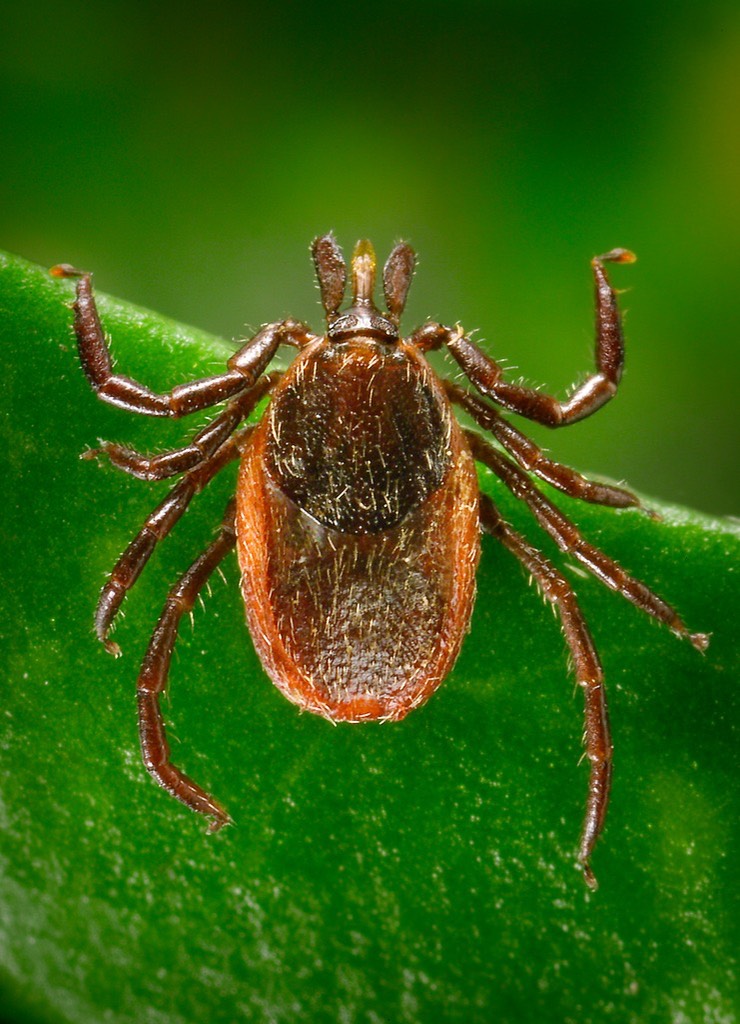
This photograph depicted a dorsal view of an adult female western blacklegged tick, Ixodes pacificus, which has been shown to transmit the zoonotic infection human granulocytic ehrlichiosis (HGE), in the western United States. The small scutum, or tough, chitinous dorsal abdominal plate, does not cover its entire abdomen, thereby, allowing the abdomen to expand many times when this tick ingests its blood meal, and which identified this specimen as a female. The four pairs of jointed legs, places these ticks in the Phylum Arthropoda, and the Class Arachnida. HGE represents the second recognized ehrlichial infection of humans in the United States, and was first described in 1994. The name for the species that causes HGE has not been formally proposed, but this species is closely related, or identical to the veterinary pathogens Ehrlichia equi, and Ehrlichia phagocytophilia. HGE is transmitted by the blacklegged tick, Ixodes scapularis, and the western blacklegged tick, Ixodes pacificus, in the United States.